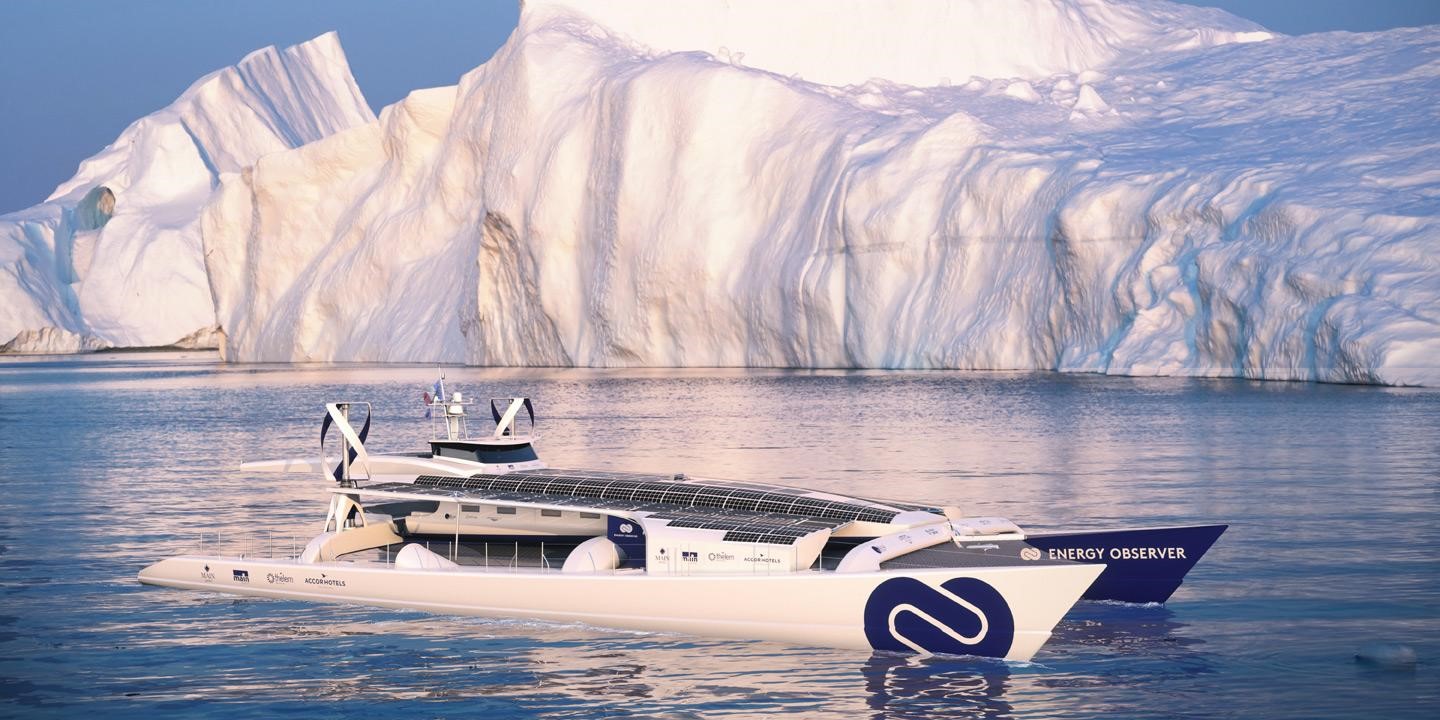
By Heather Hamilton, contributing writer
A self-fueling boat is leaving Paris for a six-year journey around the world. The journey, according to Phys.org, is meant to serve as a model for future emissions-free energy networks.
The boat, named the Energy Observer, will rely on a combination of solar panels, wind turbines, and hydrogen fuel cell systems to power the trip. Sun and wind should sustain the vessel during the day, but at night, it will rely on hydrogen acquired through electrolysis of seawater.
While the Energy Observer weighs 30 tons, it is three times lighter than MS Tûranor PlanetSolar, the last solar-powered boat that sailed the world. The boat’s top speed is 42 knots, which is three times faster than its predecessor, though the Energy Observer is likely to go between eight and 10 knots.
Scheduled to set sail on Saturday, July 22, the Energy Observer cost $5.25 million and will sail toward the Atlantic. The boat is 100 feet in length and was designed in 1983 as an open-sea sailing racer. Then skippers Frederic Dahirel and Victorien Erussard, with the help of a French research institute and nearly 50 engineers, designers, and naval architects converted it into the Energy Observer. Erussard is a former offshore racer, and he is joined at the helm by Jérome Delafosse, a naval explorer.
Delafosse said in an interview with Wired, “The problem is that 95% of the hydrogen that you use already is made out of fossil energies. We will produce hydrogen onboard from the ocean, we will clean and purify the water, and then we will electrolyze it and then compress it in tank storage.”
He goes on, “When we are over-producing energy, when we have a lot of wind and sun, the idea was not to waste this energy and to just keep it on board. Hydrogen is the best way to do this because it’s very light and the efficiency of hydrogen is three times more than just fuel.”
The Associated Press reports that its voyage will span 50 countries and include 101 stopovers. On the boat’s website, Captain Erussard said, “There is no silver bullet to fight against global warming: There are solutions, which we must learn to make work between them. This is what we do with Energy Observer: to bring together the energies of nature, but also of our society, bringing together around this boat the know-how of companies, laboratories, start-ups, and institutions.”
Delafosse told Wired, “We can use this technology in hotels, in houses, in cars … the idea is to be less dependent on the network. It shows how fast things can happen: As it did in London at the turn of the last century with [moving from] horses to cars, it will happen with renewable energy.”
Sources: Phys.org, Wired, Associated Press, energy-observer.org
Image Source: energy-observer.org
Advertisement
Learn more about Electronic Products Magazine





